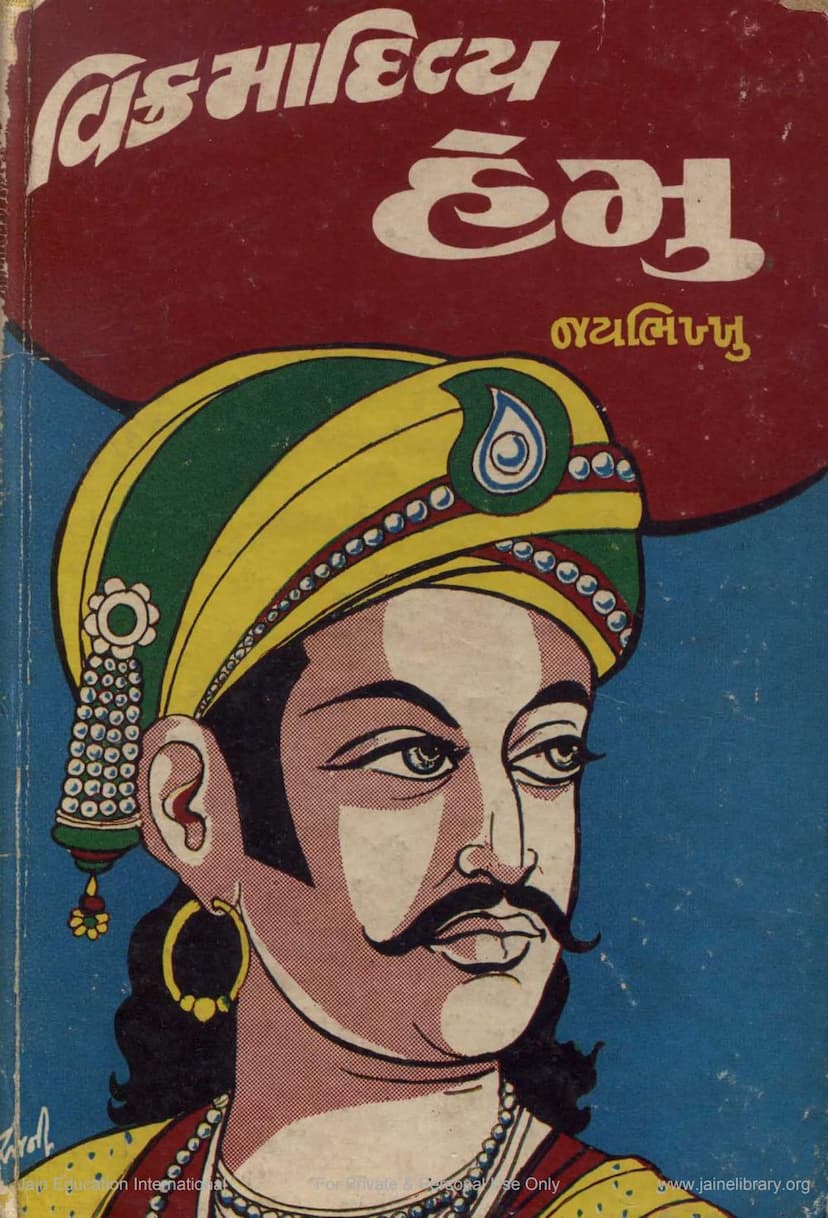Vikramaditya Hemu
Added to library: September 2, 2025

Summary
Here is a comprehensive summary of the Jain text "Vikramaditya Hemu" by Jaybhikkhu, based on the provided pages:
Book Title: Vikramaditya Hemu Author: Jaybhikkhu (Balabhai Vecharand Desai) Publisher: Jaybhikkhu Sahitya Trust Publication Details: Fourth Edition, 1973. 392 pages.
Overall Summary:
"Vikramaditya Hemu" is a historical novel by Jaybhikkhu that delves into the captivating life of Hemu, a remarkable figure who rose from humble beginnings to become a powerful king and strategist during a turbulent period in Indian history. The book meticulously reconstructs the era, blending historical facts with vivid imagination to create a compelling narrative. Jaybhikkhu's unique style of weaving historical truths with imaginative embellishments is evident in his portrayal of Hemu and his interactions with prominent figures like Emperor Akbar. The novel is presented as a significant contribution to Indian literature, highlighting themes of ambition, valor, political acumen, and the complex tapestry of interfaith relations in medieval India.
Key Themes and Narratives:
-
Jaybhikkhu's Style and Intent: The author, Jaybhikkhu, is lauded for his ability to extract historical kernels of truth and meticulously craft them with imaginative details to create an engaging narrative. The book is seen as a testament to this skill, bringing to life the historical figures of Hemu and Akbar. The publisher, Jaybhikkhu Sahitya Trust, expresses confidence that readers will appreciate this work.
-
Historical Context and Inspiration: The preface reveals that the inspiration for the novel stemmed from a childhood play where Jaybhikkhu and his friends enacted a dialogue featuring "Hemraj." The author was intrigued by the identity of this "merchant Hemu" and his potential impact. This personal connection fueled his historical research.
-
The Enigma of Hemu: Jaybhikkhu highlights the challenges of researching Hemu's life, noting how historical accounts are often brief, sometimes conflicting, and filled with religious biases from various scholars (Indian, Arab, Persian, and English). The author emphasizes the difficulty in piecing together a coherent picture of Hemu from these fragmented sources.
-
Fellow Contemporaries and Shared Qualities: The narrative identifies Sher Shah, Hemu, and Akbar as three exemplary figures, akin to "three beads on the same thread." Despite their diverse backgrounds (Afghan, Jain merchant, Mughal), they are presented as sharing a common legacy of noble Indian rulers. They are placed in the same league as historical figures like Raja Bhoj, emphasizing their focus on India's welfare, the upliftment of its people, and their commitment to justice, free from religious fanaticism or hatred. The novel touches upon their contributions to the land, including building mausoleums for their final resting place.
-
Politics, Religion, and Identity: The author critically examines the instrumental use of religion in politics, arguing that politics demands allegiance, not religion. He points out the fierce conflicts between Muslim rulers (like the Afghans and Mughals) and the greater violence often inflicted by one Muslim ruler on another, suggesting religious pretenses were often masks for political convenience. The novel aims to highlight figures who transcended religious divides, referencing examples like Jain ministers commissioning mosques, and Kashmiri Sultan Zain-ul-Abidin restoring Hindu temples, suggesting a period of syncretism and cooperation.
-
The Rise of Hemu: The narrative traces Hemu's journey from his origins as a vendor in Rewari, his studies at the school of Sher Shah, and his eventual rise as a jeweler in Delhi, inspired by a Jati (a Jain monk or scholar). Hemu is depicted as a man of experience in warfare, political strategy, and possesses great organizational capacity. His well-known elephant corps and his ability to manage destructive forces are mentioned.
-
The Tragedy of Hemu's Ambition: Despite his great potential and aspirations, Hemu's story is presented as a cautionary tale of how a grand dream can be cut short by a single, unfortunate event. The author mentions the arrow that struck Hemu unconscious, leading to his defeat and death at the hands of Akbar Shah, leaving many of his grand plans unfinished.
-
Broader Historical and Social Commentary: Jaybhikkhu uses Hemu's story to reflect on the broader socio-political landscape of India. He critiques the rise of religious intolerance and fanatical devotion, which he attributes as a "bitter fruit" of Western culture's influence. He laments the division and alienation among people living on the same land, breathing the same air, and drinking the same water, lamenting the loss of unity and the prevalence of mistrust.
-
The Narrative Structure and Content: The table of contents and the initial pages reveal a detailed exploration of Hemu's life and the era. Chapters cover his early life, his association with Sher Shah, his political and military strategies, his encounters with various rulers, and the ultimate tragedy of his downfall. The initial chapters, such as "The Visionary" (Swapanadrushta), "The Jewel of the Emperor" (Chakravarti nu Ratna), and "The Forgotten Friend" (Bhulayela Bheru), set the stage by introducing Hemu's dreams, his character, and his significant relationships, particularly with Farid (later Sher Khan) and the mysterious "Jatiji."
-
Jainism and Its Influence: The text mentions the influence of Jainism through the character of Jatiji, who advocates for moral conduct, adherence to vows, and seeks royal patronage for the Jain faith. This highlights a thread of Jain philosophy and its engagement with the ruling powers of the time.
-
Character Portrayals: The novel seems to focus on the character development of Hemu, Sher Shah, and Akbar, portraying them as individuals with complex motivations, strengths, and weaknesses. The introduction of characters like Malik Malka and Rosshan, who play significant roles in Hemu's life and ambitions, suggests a narrative rich in personal relationships and political intrigue.
In essence, "Vikramaditya Hemu" is more than just a historical recounting; it is an exploration of leadership, the challenges of nation-building, the interplay of personal ambition and historical circumstance, and a reflection on the enduring human qualities that transcend time and political turmoil. The novel aims to illuminate a lesser-known but significant period of Indian history through the lens of a compelling protagonist.